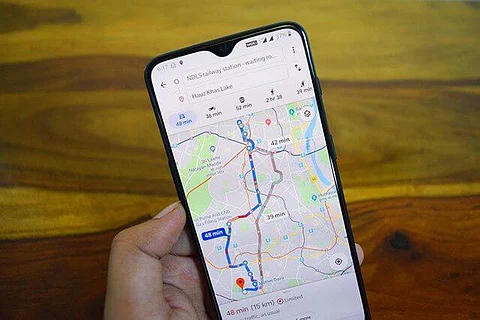
- Home
- न्यूजग्राम
- NewsGram USA
- India
- World
- Politics
- Entertainment
- Culture
- Lifestyle
- Economy
- Sports
- Sp. Coverage
- Misc.
- NewsGram Exclusive
- Jobs / Internships

Google Maps on Wednesday said it has incorporated an ensemble of learning models that automatically transliterate the names of points of interest (POIs) to 10 prominent local languages, making it easier for Indian language users to find the things they look for at Maps.
This new feature will enable millions to issue queries in their own language and find information on Maps such as restaurants, petrol pumps, hospitals, grocery stores, banks, bus stops, train stations, and numerous other services, Google said.
Follow NewsGram on Facebook to stay updated.
By using automatic transliteration from the Latin script (English) name of points of interest, Maps now displays their names in Hindi, Bengali, Marathi, Telugu, Tamil, Gujarati, Kannada, Malayalam, Punjabi, and Odia.
"To make Google Maps as helpful as possible for millions of Indian language users, we've introduced an updated automatic transliteration system that enables us to deliver more accurate results when users search for POIs in their preferred language," Cibu Johny, Software Engineer, Google Maps, said in a statement.
The updates make it easier for Indian language users to find the things they look for at Maps. Pixabay
"In a country where names of establishments are written with words from multiple languages and acronyms, phonetically mapping these words into their native language will help us more accurately surface the results that local language users are looking for."
Explaining how the feature works, he added, "Common English words are frequently used in names of places in India, even when written in the native script. How the name is written in these scripts is largely driven by its pronunciation. For example, NIT written in Hindi is pronounced "en-aye-tee", not as the English word "nit".
Therefore by understanding that NIT is a common acronym from the region, Maps can derive the correct transliteration. In the past when Maps could not understand the context of NIT when written in Hindi, it would instead show a related entity that might be farther away from the user. It is important to note that the transliterated POI names are not translations. Transliteration is only concerned with writing the same words in a different script. (IANS)
